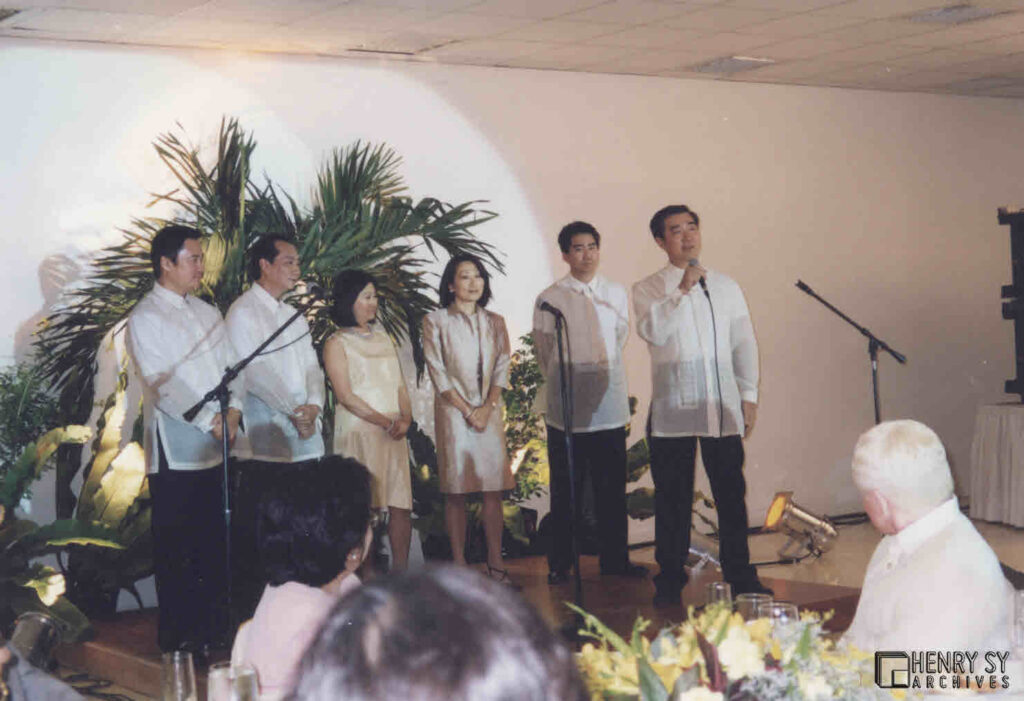She stood all alone for years in the middle of a vast, desolate, empty and recently dredged parcel of land. Around it, not even a solitary tree took root. There has been a lot of talk, reactions and even tall tales along the lines of “What is she all about?”

It seemed the general public only saw her from a distance. I can even recall from whenever I drove through the boulevard by the bay, no one visited — neither humans nor vehicles. “Was she only a mysterious façade?” I even wondered.

Fast forward. A new city was born and within the site rose the Mall of Asia Arena. Here, we watched once-in-a-lifetime concerts with adored performers from home and abroad with family and friends. And not to mention the game exhibitions with global star players and admired athletes. Likewise, not to be forgotten are local basketball and volleyball games of my old school De La Salle University, and De La Salle-College of Saint Benilde — my newest affiliation. The arena even played host to the visit of Pope Francis on the day concentrated on families, where we were blessed with a vantage point — a dream fulfilled thanks to a special friend.

Another boon came in the form of Conrad Manila — the hotel of choice, even with its relatively short life — for quick get-togethers to witness the sinking signature afternoon sun with innovative cocktails, along with exquisite snacks. We were lucky enough to be invited to quarterly art exhibits and ballroom affairs, whether diplomatic, corporate or personal in nature. We must also be thankful to join food festivals with visiting master chefs, and even affairs such as the Chinese New Year celebrations and Christmas tree lighting ceremonies.

As we frequented these two venues, I finally noticed that the enigmatic mirage of a chapel was in the midst of it all. And thus, I resolved I must get to know her.
For starters, her full name is the Archdiocesan Shrine of Jesus, the Way, the Truth and the Life.
I finally stood in front of the imposing façade. Its entrance revealed paintings of Saint Dominic Savio, known for his piety for the Catholic faith at a very young age, and Saint Maria Goretti, one of the youngest saints to be canonized. I was familiar with both, as they are patron saints of the young.

The main altar was utterly awe-inspiring — especially since it also impressively featured an oil painting, a pleasant departure from the usual icons and images in other churches. The centerpiece was an obra depicting the finding of Jesus at the temple, as mentioned in the Gospel of Saint Luke in the Bible. And oh yes, the iconic Cornerstone — but more on that later.

On the left stands the Blessed Virgin Mary statue, and Jesus the Divine Master image on the right. On top, there is a representation of the Holy Spirit in the form of a dove.
Exploring further, the left section had the Blessed Sacrament and its
ever-present iconic red light. The right portion featured Our Lady of the Holy Rosary likeness.
Underneath petite stained-glass windows, the old Stations of the Cross depicts the Lord’s trials and tribulations.

In spite of the continuous gusts of crosswinds, we noticed gigantic a ceiling fan and several stand fans generously scattered around to keep the congregation cool during services.
House of God
I was fortunate to meet three individuals at the church. Rose Siaco, the three-generation confidant of a huge conglomerate-focused family, graciously invited me to the Youth Center to share more on its origins. Here, we were joined by parish priest Rev. Fr. Danilo Canceran and active layman and media practitioner Mon Gualvez.
The founding of the house of God traces back to 1995, when none other than the Saint-Pope John Paul II pressed his dream to have a center for the young during his historic visit to the country at the World Youth Day, which was held in Luneta Park in the City of Manila.
The late archbishop of Manila, His Eminence Jaime Cardinal Sin, DD, derived the name from none other than the pope. The Church as it stands today is a testament to that vision.
The aspiration was made possible through the generosity of the late philanthropist, businessman, investor and visionary Henry Sy Sr. and wife Felicidad, the prime mover of chapels within their properties, who initially donated a valuable piece of land. But they likewise decided to undertake the entire project — land area and construction.

With the architectural expertise of esteemed architect Jun Palafox, instrumental in the transformation of modern Dubai, and austere interiors by accomplished architect Gervasio Amistoso, best remembered for the Parish of Saint James the Great in Alabang, the Sy family tapped their ever-reliable Pyramid Construction and Development Group Corporation for the engineering.
Once the sanctuary was completed, for years it stood alone and yet unyielding, along the now-called Mall of Asia complex as a solace for weary pilgrims and devout visitors.
Just before the turn of the century proved to be a pivotal moment, as the church was consecrated and dedicated by church dignitaries. This hallowed honor was attended by the Apostolic Nuncio in the Philippines, His Excellency Archbishop Antonio Franco, DD, His Eminence Jaime Cardinal Sin, DD, with His Eminence Ricardo Cardinal Vidal, several other archbishops and bishops of the Philippines.
The most notable relic housed within its confines is a massive stone blessed by none other than the Saint-Pope during the celebration of the Holy Eucharist at the Reclamation Area. This boulder, dubbed as the Cornerstone by Cardinal Sin, is now enclosed within glass below the main altar. It continues to represent the youth and the World Youth Day Celebration.
“When my dad showed the family of his grand plan to create the Mall of Asia complex, my mom declared she was in full support for as long as he built a church. My dad obliged,” confirmed Hans Sy, one of the Sy siblings, who now takes on a vital, active and reassuring role in the church.

“It’s a Spanish-era Baroque church design suggested by architect Jun Palafox. Although my dad tweaked it a bit as he always liked symmetry in designs — he added another bell tower to make it look symmetrical,” Sy disclosed. So, the shrine predominantly has two steeples to represent balance — since Henry Sy Sr. was born in October and was a Libra in the zodiac calendar.
In the same vein, this structure serves dual duty as the Shrine and a Youth Center — two identities which supplement each other — just as how the Saint-Pope envisioned it.
From the early status of low number of faithfuls, coupled with inaccessibility — for there was only one route coming from EDSA — and no means of public transportation available. It has now blossomed into a thriving and sustainable religious community, thanks to the establishment of the Mall of Asia Complex and its numerous transport terminals, plus the never-ending efforts of the church volunteers.
Today, the shrine attracts mallgoers and the curious, plus pilgrims and devotees, and volunteers from all walks of life
— mainly from Pasay and Manila, but even from nearby provinces such as Cavite.
The Shrine now conducts Holy Masses on a daily basis. It likewise hosts baptisms, weddings and other religious observances and rituals.
The Youth Center, located just below the chapels, are also available for formation programs and gatherings. In the year 2000, one of the very first events to be held at the church was the 50th wedding anniversary of the benefactors Henry Sy and Felicidad Sy — fondly known as Tatang and Nanang.
The Lord’s House celebrated its 25th fiesta last year.
The country’s biggest conglomerate continues with its noble mission to build more chapels within malls, or standalone churches built on properties, such as the Saint Pedro Calungsod Church in Cebu City and Saint Therese in Pico de Loro. This convenience brings Jesus to the people, as encapsulated in Luke 8:16-18 that reads, “No one lights a lamp and hides it in a clay jar or puts it under a bed. Instead, they put it on a stand, so that those who come in can see the light.”
